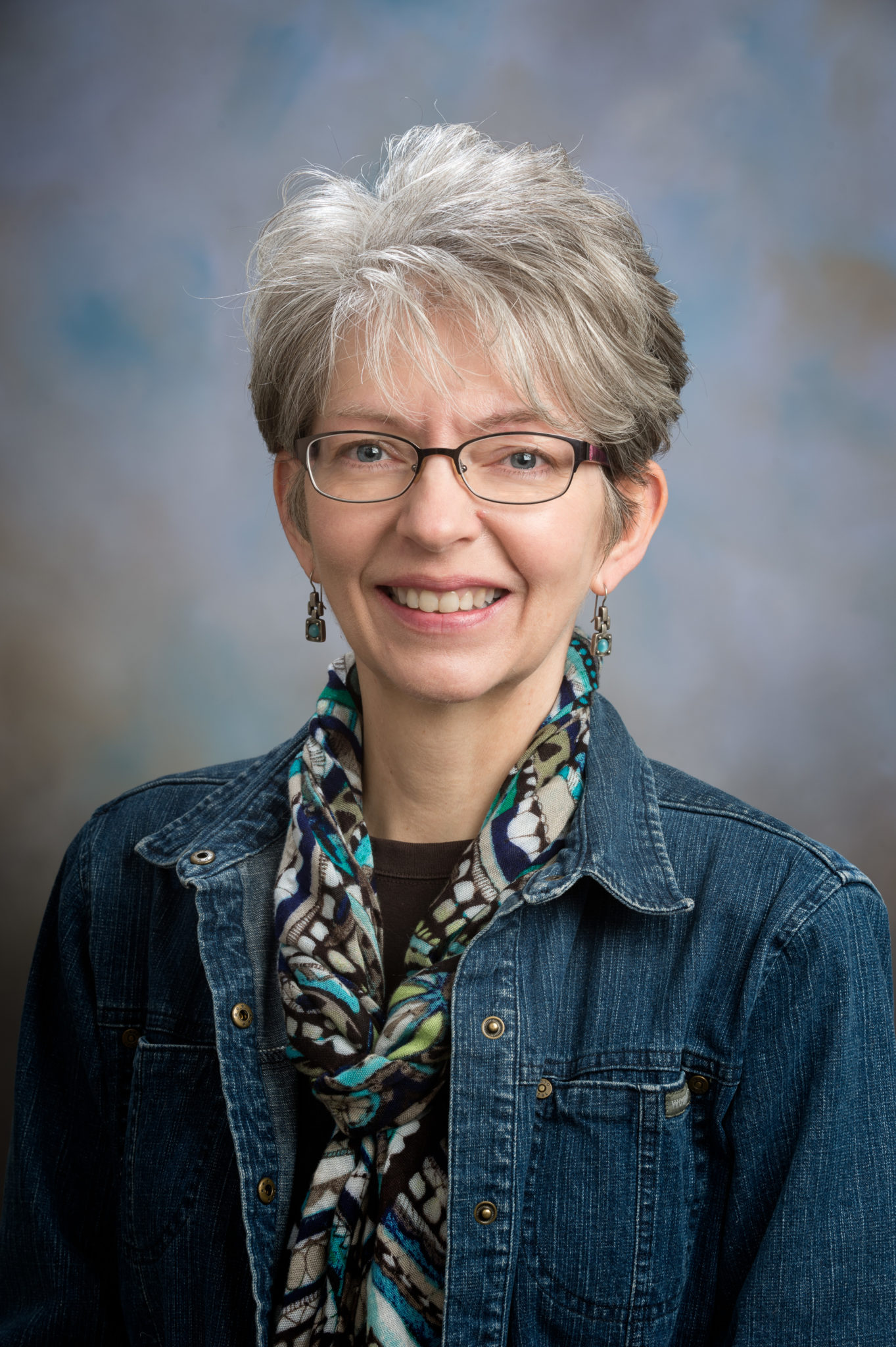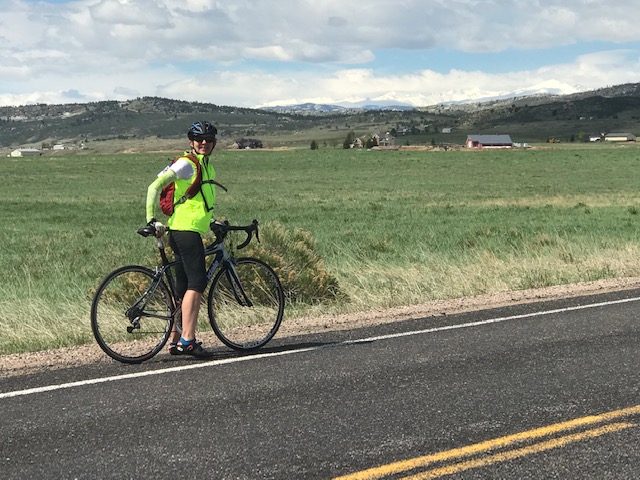
Story by Maggie Grayson and Annie Peyton
Ever since high school Barb Hooper knew she wanted to be an occupational therapist. Her interest began when she read an autobiography of a woman who became paralyzed after a diving accident and then went on to become a famous artist, drawing and painting with the use of a mouth stick.
“It was an occupational therapist who taught her to use the tools,” shared Hooper. “The image totally compelled me… how someone who couldn’t move except to shrug her shoulders and turn her head could fully participate with her remaining capacities.”
Since that inspirational start to Hooper’s career, she has been a part of various occupational therapy programs teaching and conducting research. She began her position as associate professor in the Department of Occupational Therapy at Colorado State University just over a decade ago in which she has become a beloved professor by her students and a respected colleague by her fellow faculty members.
New opportunity
Presented with a new professional opportunity, Hooper is taking on the role as founding program director of Duke University’s occupational therapy doctorate program. Although she will be greatly missed in the CSU community, she leaves behind a legacy that won’t soon be forgotten.
Improving the way educators teach occupational therapy
Hooper joined CSU’s occupational therapy program in 2008, driven largely by an opportunity to start the Center for Occupational Therapy Education which was developed to understand and improve the way educators teach occupational therapy. “That was a dream of mine,” Hooper shared about COTE, “to look at how occupational therapy programs teach the core subject of the field, meaning occupation and its relations to health and well-being. I’ve been developing a model for educators that guides instruction and curriculum design in relation to that core.”
 This model, called the Subject-Centered Integrative Learning Model, has not only informed CSU’s occupational therapy program; faculty come from around the country to attend a four-day institute taught by Hooper so they can integrate her model into their own curricula and syllabi. Sometimes Hooper acts as a consultant, traveling to other universities for training sessions. “We go through their instructional design and materials and work on their curriculum goals together,” says Hooper.
This model, called the Subject-Centered Integrative Learning Model, has not only informed CSU’s occupational therapy program; faculty come from around the country to attend a four-day institute taught by Hooper so they can integrate her model into their own curricula and syllabi. Sometimes Hooper acts as a consultant, traveling to other universities for training sessions. “We go through their instructional design and materials and work on their curriculum goals together,” says Hooper.
The model has also become ubiquitous among CSU’s occupational therapy students who work with it during their very first semester in the program to help them understand the theoretical foundations of their new profession. Hooper’s favorite part of being a professor, she says, is teaching. “What I love about it is that dance, if you will, where we all kind of think about things on the spot and put things together in novel ways. I leave with something new and I hope the students do, too.”
At Duke, Hooper plans to continue with the work she has started. “I am looking forward to testing what I’ve been doing these ten years, in terms of using the model to design a program from the ground up. I’d like to make the model a little more interactive and more readily available to people. I also hope that Duke becomes a leader in occupational therapy education and education research.”
A mentor of many
Hooper has also acted as a mentor to a myriad of masters and Ph.D. students who have conducted their own research under Hooper’s inspiration and guidance. Hooper acknowledges that this is one aspect of her time at CSU that she will miss greatly. “I just love the mentoring piece,” she reflects. “I really enjoy getting to know students better, working with them more closely and seeing their successes. I hold in my mind a parade of students that have been a total joy to work with.”
One such student is Bill Roberts who shares of his mentor, “I came to the CSU Ph.D. program because of Barb Hooper and her expertise in occupational therapy education. I am so grateful for her breadth of knowledge, passion for education and the way she pushes me to be a better teacher and researcher. I’m going to miss her, but I can’t wait to see what she creates at Duke.”
An author
Hooper has also been a prolific writer. Together with Wendy Wood, she has written content for Willard and Spackman’s Occupational Therapy textbook, a gold standard for students and professionals. In addition, she has led a research team organized by the American Occupational Therapy Foundation and the Society for the Study of Occupation that has produced a collection of articles exploring how programs address occupation in their curricula. Hooper is now busy working on a book that she describes as the heart of COTE. “I think this book will drive the new activities that the center at Duke will then host,” she shares.
Leaving Fort Collins
 Amid all of the exciting opportunities that await, Hooper reflects on leaving her home of the past decade. “Leaving Colorado is going to be very hard,” she acknowledges. “The dramatic beauty that is so nearby… it’s that soul piercing beauty that I’m really going to miss.”
Amid all of the exciting opportunities that await, Hooper reflects on leaving her home of the past decade. “Leaving Colorado is going to be very hard,” she acknowledges. “The dramatic beauty that is so nearby… it’s that soul piercing beauty that I’m really going to miss.”
An avid cyclist, Hooper says she will miss living in such a bike-friendly community as Fort Collins. However, it is the personal connections she has developed that she reflects on the most. “I’ll miss the students and the people I work with here – each one has given me gifts over these ten years that I will carry that have made me a better scholar, a better teacher and a better person.”
A lasting impact
Hooper’s influence will be missed by countless students and faculty members that she has touched. Department Head Anita Bundy says of her friend and colleague, “I will miss Barb in the worst way imaginable—her insightful, reflective, brilliant way of being and her ability to gently steer CSU’s occupational therapy curriculum.”
This sentiment is shared by a department that has benefited from Hooper’s passion for over a decade. Although she will be greatly missed, there is no doubt that her contribution to her field will continue into this next endeavor and beyond.
The Department of Occupational Therapy is part of CSU’s College of Health and Human Sciences.